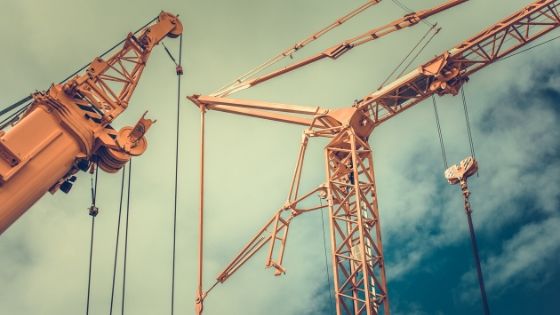Innovation has pushed society to perform almost beyond one’s imagination. What people couldn’t fathom 100 years ago is now easy to thanks to modern machines, technology and tools. But with all these advances that affect almost all industries come an immense responsibility to use it correctly. The question is: are you doing this in the hoisting and lifting tasks you perform?

The key to staying safe is to remain vigilant whenever you use lifting equipment, hoists or related tools for height safety. Even if you’ve been in the industry for a long time you need to stay on top of changing regulations and if you’re a newbie, teach yourself to prioritise safety measures at all times.
We’ve created a question checklist. The questions have helped many workers identify possible risks they didn’t think of. After all, you’re often working with a deadline, so you may be a in a rush. Use these questions to help you focus and prevent unnecessary mistakes.
Do You Have the Right Man for the Job?
On a busy day or with a deadline looming you can be forgiven for trying to find the quickest way to get a job done. But don’t go that route when it comes to operating equipment on site. Make sure equipment such as cranes have certified personnel behind the controls. Even if you’re hiring equipment with staff, it’s your responsibility to make sure the individuals on your site can perform the tasks legally.
Is Your Lifting Plan in Place?
Never simply start a lifting job and hope for the best. You may trust your intuition but that won’t serve you well if you’re having an off day or if you’re preoccupied and miss something important.
To avoid risk, set out a detailed plan. One of the biggest motivations behind a lifting plan is to have a practical way to assess risks and remove as much of the risk as possible.
A lifting plan isn’t simply a discussion or a few written notes. Rather, make detailed sketches so everyone working on the project will know what you expect of them. And if you’re not the person in charge, ask your supervisor for these important guidelines. It’s your right.
Even if you’ve created a lifting plan before, search online for even better templates and lifting plan guidelines to streamline your process. This will make you feel less rushed, so you have more time to invest in planning.
Are You Using Safe Equipment?
It’s not only the who and the how that’s important, but also WHAT you’re using. Luckily, it’s often easy to assess whether equipment is safe to use. Simply look at the markings. Quality lifting and hoisting equipment that’s maintained by reputable suppliers will have the appropriate markings such as its capacity and whether it’s appropriate for lifting people.
While you’re double checking, make sure the paperwork for the equipment is in order. You need written certification that an item was checked by an engineer and deemed safe for use.
Also make sure that the equipment was checked recently because they are used under extreme conditions. You can’t take the risk of wear and tear resulting in an accident. The legal guidelines for when each item requires servicing or inspections differ, but even smaller items such as shackles should be checked at least once a year.
Here’s an important tip: if any piece of the lifting or hoisting equipment doesn’t look the same as its original design, don’t use it anymore. Pressure or tension can pull even sturdy metal out of shape and that means your equipment isn’t as safe to use as always. Rather put it aside and order new ones.
Are You Attempting a Critical Lift?
Before you start you also need to identify if you’re about to attempt a critical lift. This doesn’t necessarily mean that you can’t perform the task, but to execute it safely you may need to put additional measures in place.
There may not be an industry standard of what a critical lift entails, but it’s an important item to add to your regular checklist. Examples of details that turn a project into a critical lift include the following:
- If the lift requires more than 75% of a crane’s load capacity
- When the lift includes lifting people, or will result in the load being suspended above anyone
- When the operator of a crane can’t see the load
- When you need two cranes or more to complete the task
- When instability is obvious
- Working with a load that is worth a lot of money
The spectrum is vast, so it’s important that anyone working in this environment uses common sense to recognise a situation as being critical. Why? So you can incorporate additional measures to protect everyone involved.
Last Words
Working with lifting equipment, huge loads and working at heights is exciting. It’s also essential to society, since we’re creating bigger structures all the time. So, let’s keep the industry safe by following all the safety guidelines set by regulators. Hopefully these questions help you get it right and if you have any suggestions, please leave a comment.
